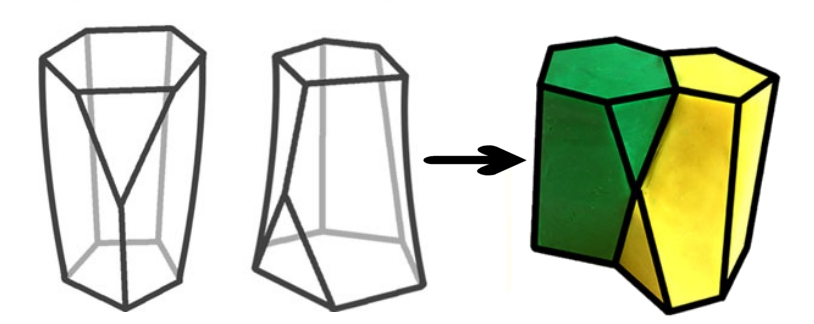In 1619, Orazio Grassi (a mathematician, astronomer and architect) wrote about three comets that had recently appeared in the sky. He gave evidence that they must have been far from the earth, even beyond the moon. Galileo wrongly believed that comets were in earth’s atmosphere, and so he wrote Il Saggiatore (The Assayer) in reply. Although Galileo’s overall argument was wrong, the piece does contain a statement that is quite profound:
Philosophy [he is referring to what we call “science” today] is written in this grand book, the universe, which stands continually open to our gaze. But the book cannot be understood unless one first learns to comprehend the language and read the letters in which it is composed. It is written in the language of mathematics, and its characters are triangles, circles and other geometric figures without which it is humanly impossible to understand a single word of it; without these, one wanders about in a dark labyrinth.
While most scientists who use this quote are talking about physics and perhaps chemistry, the fact is that mathematics seems to be the language in which God wrote His creation. As a result, all areas of science (even biology) require the use of mathematics to unlock the true secrets of creation. I recently ran across a paper that illustrates this point rather well.
The authors were using a mathematical technique called Voronoi Diagramming to model how certain cells in an embryo pack together to form the shapes of the organs that are developing. Generally speaking, most biologists assume that the cells become column- or bottle-like in shape so that they can squeeze together and form the smooth curves that characterize the shapes of the organs. However, their mathematical model predicted that another set of shapes would develop – shapes that are so unique they don’t even have a name. As a result, the authors call the shapes scutoids, which refers to the scutum and scutellum, features found on certain insects, like beetles.

Drawings of two scutoid-shaped cells are shown on the left side of the illustration below, and the way those two shapes fit together are shown on the right side of the illustration.

Now, of course, the authors didn’t just believe the results of their mathematical model. After all, the mathematical model contains assumptions, and those assumptions could be flawed. However, armed with the knowledge of those shapes, they examined specific tissues in developing fruit fly larvae. Sure enough, they found tissue structures that are composed of scutoid-shaped cells.
Why do cells form these shapes in developing fruit fly embryos (and presumably other embryos)? The authors state:
Using biophysical arguments, we propose that scutoids make possible the minimization of the tissue energy and stabilize three-dimensional packing. Hence, we conclude that scutoids are one of nature’s solutions to achieve epithelial bending.
In other words, they produce the most stable tissue at the lowest energy.
Now remember, the reason the authors found this brand-new cell shape is because they started with mathematics, just as Galileo instructed. Writing more than 300 years after Galileo, Sir James Hopwood Jeans (English physicist, astronomer and mathematician) tells us why he thinks Galileo was right:
Lapsing back again into the crudely anthropomorphic language we have already used, we may say that we have already considered with disfavour the possibility of the universe having been planned by a biologist or an engineer; from the intrinsic evidence of his creation, the Great Architect of the Universe now begins to appear as a pure mathematician. [The Mysterious Universe, Cambridge University Press 1931, p. 122]

I like this article. It reminds me of something that Richard Feynman said in talking about quantum mechanics, namely that you can’t understand QM without knowing the mathematics behind it, no matter how many books you read on the subject. It is mathematically discerned, so to speak. As a Christian, that rings a familiar bell because Paul observed that the man without the Spirit can’t understand the things of the Faith because they are spiritually discerned.
So perhaps the necessity of mathematics extends beyond QM into many other areas of science as well. That seems to underscore the idea of James Jeans that the Great Architect is a Great Mathematician. This was a really thought provoking article.
Pretty interesting. I just watched an old Alan Holden / Bell labs video on crystals.
https://www.youtube.com/watch?v=_YW0wjYdUPw
Mostly rudimentary but the microscope video of a crystal growing at the 3 minute mark is pretty cool. Later in the video around the 7:45 mark he mentions that basically all solids are crystaline in nature (exceptions?). He also mentions similarly that you can understand crystaline structures and solids in general if you understand basic atom packing. Do you think these basic ideas translate into the way organic structures are built?
Not all solids are crystalline. For example, glass is not crystalline. It is classified as an amorphous solid. So are many polymers. In their solid state, most organic compounds (not including many polymers) are crystalline. For example, Rosalind Franklin did an x-ray diffraction experiment on solid DNA, which is crystalline. While it didn’t occur to her, the results of her experiment allowed Watson and Crick to determine the double-helix nature of DNA.
Wow.. that response just opened some doors. Gonna read up. Thanks!
Ahhh… Glass is a supercooled liquid?!! Or amorphos solid? I’m confused. My life is changed.
Glass is an amorphous solid.
I used to think that way about math. Now I think that God wrote the universe in physics, and that math is less fundamental.
Though I suppose I am biased.
Well, a lot of physicists consider themselves applied mathematicians, so…
This was partly in jest, but the truth to it I was getting at is that, ultimately, physics is a translation of the universe into mathematical language. When I do my work, I start with the thing itself, and I use it to figure out a way to express what it does in mathematical terms. The math is how I write down what’s actually going on; what’s actually going on is antecedent to it.
Now, sure, this is also consistent with the idea that the universe was written in math, and we physicists just see the pattern based in mathematics. But enough of the math we use today came from solving physics problems that I think thinking about the stuff is more important than thinking about the language we wrote to describe it. And there’s also the case of the string theorists who have been solving math problems with their physics…
I also had this interview with V.I. Arnold in mind; his anecdote about the students messing up the exam problem because they were thinking too abstractly is probably what made me of this particular perspective on math. Another thing that probably contributed was that I had a professor who was way too fond of showing off how great his knowledge of mathematical methods was. Even though I know more math than most physicists, I really disliked how he taught, because he didn’t really care about why the math mattered. It was just a machine for him. And he left us all confused.
Anyway, the notion of minimizing the surface contribution to the energy is very physical, and I’m surprised no one ever did a Voronoi tesselation for cells before. (I mean, the Wigner-Seitz cell is a Voronoi polygon, but it’s kind of obvious such a thing would make sense for a thing as regular as a crystal. I hadn’t heard of Voronoi polygons until I started learning about granular materials.) I guess I should read the paper.
I used to be scared that something could exist along side God, but I realized along as one God exists the number one exists along with him. Then that made me realize how God can take it all the way. Maybe that is how He created the universe.